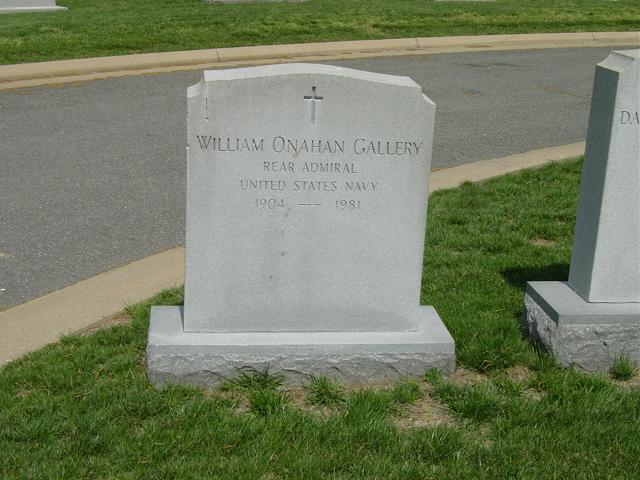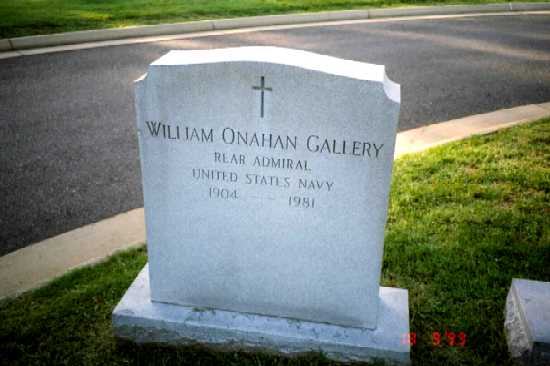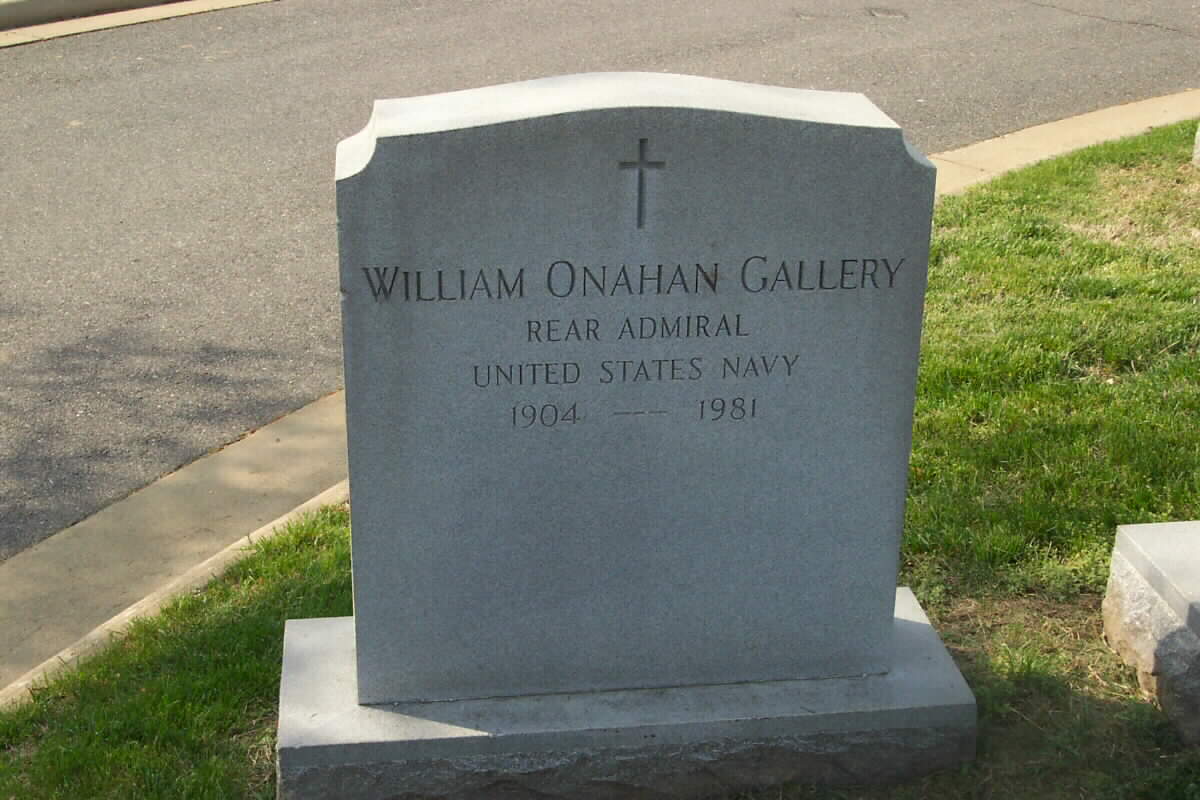REAR ADMIRAL WILLIAM ONAHAN GALLERY
Rear Admiral William O. Gallery was born in Chicago 22 June 1904, and attended school there until he was appointed to the United States Naval Academy in 1921. He was commissioned an Ensign in 1925, and assigned to duty in the battleship USS NEW MEXICO until 1927. He was then assigned to duty on the USS FARRAGUT, being detached in 1930 with orders for flight training at Pensacola, Florida.
Admiral Gallery completed his training and won his wings in nine months. He was then attached to Patrol Squadron 6. In 1933, he was transferred to the cruiser USS OMAHA as Naval Aviator, serving in that capacity until 1935. from 1935 to 1937 he was assigned to duty in the Aeronautical Engineering Laboratory in Washington, D.C. In 1937 he was assigned as a fighter pilot with Fighter Squadron 6 aboard the USS ENTERPRISE, and from 1939 to 1941 was stationed at the Naval Air Station, Alameda, California.
At the start of World War II, he was ordered to the Staff of Admiral Kincaid, and, with the staff, he participated in the Battle of Santa Cruz, and was later based ashore at Guadalcanal. On Guadalcanal, he saw action with the First Escort Carrier Task Group. He later joined the famous Black Cats (PBY night raiders) based on the USS HALF MOON (AVP 26). He devised a method of “knocking-off” Japanese night raiders, for which action he was awarded the Distinguished Flying Cross.
Returning to the United States, he was assigned to the USS CHICAGO as Commanding Officer. He was promoted to the rank of Captain immediately prior to taking command of the CHICAGO. After his tour of duty on the CHICAGO, Admiral Gallery was attached to NATTS at Eglin Air Force Base, in the All-Weather Flying Hangar. His next duties in succession were as Commanding
Officer of the USS SIBONEY, Commanding Officer, Naval Air Station, Guantanamo, Cuba, and as Deputy Chief of Naval Operation (Air).
From the Bureau he took command of the USS PRINCETON (recommissioned) on 28 August 1950 at the Bremerton Naval Shipyard, and retired in June of 1955.
Admiral Gallery died in 1981 and was buried with full military honors in Section 3 of Arlington National Cemetery, adjacent to his two brothers.
Daniel Vincent Gallery, Rear Admiral, USNA, WWII, Captured A German U-Boat
Philip Daly Gallery, Rear Admiral, USNA, WWII, Decorated Destroyer
Commander
The colors, green and gold, and the rampant lions have been adapted from a personal device of the Gallery family. The lions, symbolic of courage and strength, face in different directions, indicating that the brothers, for whom this ship is named, RADM Daniel V. Gallery, RADM Philip D. Gallery, and RADM William O. Gallery, served in both theatres of operation during World War II. The stars allude to their many awards, and denote excellence and achievement. The crossed swords, adapted from the Officer and Enlisted badges, allude to Naval Combat Operations.
CREST
Blue and gold are the colors traditionally associated with the Navy. The upraised arm in green and gold is an adaptation from the Gallery family device. The collared and chained sea- wolf symbolizes the only capture of a U-boat from the German “wolf packs” during World War II. The crest also symbolizes the curbing and destruction of enemy sub activities in the Pacific Theatre. MOTTO: MANU FORTI “With a Strong Hand”
Michael Robert Patterson was born in Arlington and is the son of a former officer of the US Army. So it was no wonder that sooner or later his interests drew him to American history and especially to American military history. Many of his articles can be found on renowned portals like the New York Times, Washingtonpost or Wikipedia.
Reviewed by: Michael Howard




